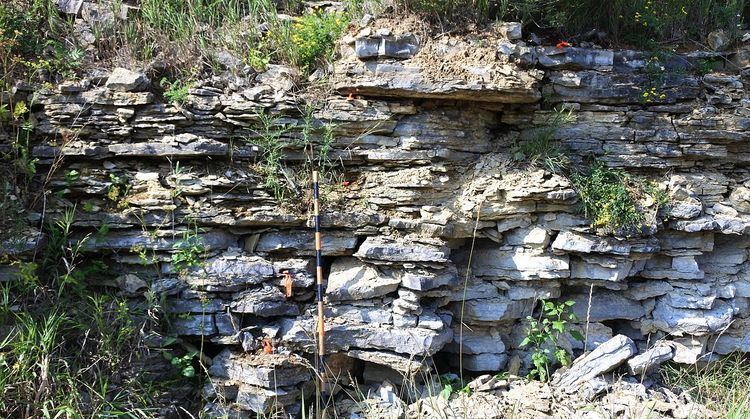 | ||
Platteville limestone top 8 facts
The Platteville Limestone is the Ordovician limestone formation in the sedimentary sequence characteristic of the upper Midwestern United States. It overlies the thin Glenwood Shale, which overlies the thick Saint Peter Sandstone. It is shot through with dolomitic mottles in an anastomose pattern; this dolotimization occurred after deposition but prior to the development of joints in the rock.
Contents
This difficult-to-erode unit forms the cap of Saint Anthony Falls and the Mississippi River bluffs in most of the Twin Cities area. Sea life was abundant during the Ordovician Period and a large number of marine fossils including corals, bryozoans, brachiopods, clams, snails, cephalopods, and trilobites can be found in the limestone sediments at several areas in the Twin Cities and along the Mississippi River at Minnehaha Falls park and elsewhere.
Building material
Many early stone buildings in Minnesota were constructed with this material, which often was quarried at the site. It can often be seen in older neighborhoods as the foundation for a building or a retaining wall. A notable existing example is the Nicollet Island Inn in Minneapolis.
